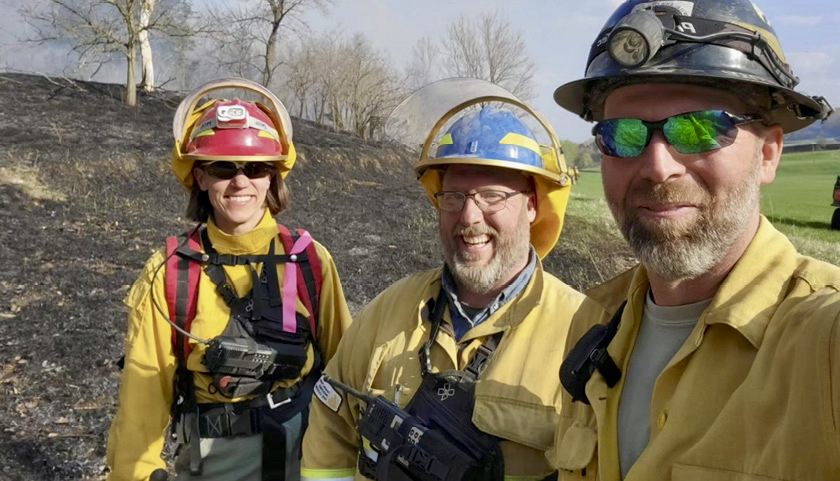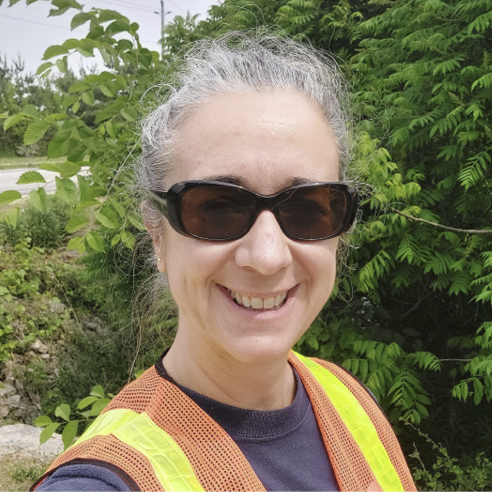Burnout a problem in conservation sector

Mental health challenges are a regular topic of discussion in the agriculture sector, but farmers are not the only workers with high rates of anxiety, depression and other forms of mental illness.
Read Also


New AgScape initiatives aim to fill industry gaps
AgScape, a non-profit agriculture education organization, recently announced investments of up to $3 million from the governments of Canada and…
Why it matters: People in the environmental sector face many challenges to their work and purpose.
For those working in the environmental sector, burnout, depression and anxiety are common and can be exacerbated by seemingly insurmountable challenges such as climate change, inadequate budgets and lack of public support.
Like Canada’s farming community, environmental sector professionals strive to manage mental health by focusing on small victories and supporting their peers.
Twenty years in the environmental sector have shown Katie Stammler, a water quality scientist now working with the Essex Region Conservation Authority, that burnout is a major problem. It can begin while still in academia, where “imposter syndrome” — feelings of self-doubt about one’s capability and validity — is common.
“Generally speaking, in science there’s a lot of people in graduate school who are convinced someone will find out you don’t belong there,” says Stammler, who herself struggled in this regard and has committed to helping others by being more open about her experiences.


photo:
Contributed
“We all feel these things at some point. There’s a movement towards kindness in science and spending more time connecting with students when you’re a mentor. As one of my colleagues says, our superpower is we talk to each other and work through things together … Locally, you find your own circle and support each other. It helps us do more with less.”
The importance of mutual support and team building is also shared by veteran agrologist Renny Grilz, resource management officer for Meewasin Valley Authority, based in Aberdeen, Sask.
With 30 years in the business, Grilz has seen many colleagues take on work at levels that eventually damage their personal and family health.
“I’ve seen a lot of divorces,” he says, referencing cases where he suspects overwork played a role in relationship breakdown.
Some conservation tasks are more stressful than others, of course. For Grilz, land procurement projects can be particularly frustrating.
“When we’re working with landowners to conserve land, you want to provide the best service for that client, but you also want to do it within your internal processes as quickly as possible. Sometimes those internal processes don’t match the urgency of the landowner…
“Having constant deadlines while fighting funding programs and internal processes creates a burden on people who want to do the best they can.
“Working in conservation world, most of us are here because we are passionate about it. So, you end up working a lot of hours and a lot of unpaid overtime. That creates not only burnout for yourself but also within families.”
Small successes
A significant driver of anxiety, burnout and general feelings of despondence for environmentally focused professionals is the perception that ecosystems continue to degrade despite how hard they work to stop the metaphorical bleeding.
Businesses, governments and individuals are often unwilling to address or even acknowledge problems. Funding cuts to environmental programming and understaffed organizations and institutions are additional issues.
“You know if you don’t do that land procurement project with that landowner, someone will come in behind you and convert it. But is it worth all this time, effort, and money when you know the next parcel over, that you don’t do the project on, is going to get developed?” Grilz asks.
Controlling invasive species is a different but equally frustrating challenge that illustrates the headwinds facing conservation professionals.
“You’re constantly battling it, while seeing it slowly progress. Often, you’re sitting there with a backpack sprayer in 30 degrees wondering ‘why am I doing this?’ You battle your inner emotions while you’re doing the work.”
In heavily farmed and highly developed southwestern Ontario, Stammler says she has never reached a point where she considered walking away from her career. It is common for attitudes to shift, however, from “coming in fresh-faced and wanting to make a huge difference” to reframing the value of small successes.
“It’s very easy to tell yourself ‘none of this matters.’ You do have to do a lot of personal work,” she says. “It’s critical to focus on small victories, and always communicate things can be better.”
Stammler makes use of literature specifically designed to keep people worried about the environment from losing hope. Books focused on “eco-anxiety,” including one called Generation Dread — a volume described by its publisher as “an impassioned, informed perspective on eco-anxiety and staying sane amid climate disruption” — reinforce that change is possible and strategies for staying positive can inspire others.
“Just talking about doom and gloom, people get frozen. You have to phrase it that ‘things might be terrible, but here are the things we can do.’ In agriculture, for example, its working with early adopters and those who follow them. Don’t focus on those who will never change.”
Identifying individuals who are engaged, and knowing efforts will help them make a difference, is an effective approach with student groups, she said.
“Coming from a non-agriculture background, it’s been important for me to know why people do the things they do … If we all tried to do everything, we would very quickly become discouraged. If you as an individual can pick one or two things to commit to, and do well, that’s amazing. Especially in the ag community, it’s about picking the best practices that fit well in your program.”
Girlz says conservation professionals have to be selective in choosing their battles.
“Constant fights will kill you. You have to pick the battles you can win, and take those little victories. Focus on those little wins you can do every day with your team – whether that’s ‘yay, we worked with a group of school students who were engaged,’ or ‘yay, we accomplished that prescribed burn’ – because cumulatively those little wins lead to big wins.”
Several decades of work in and between conservation and agriculture have also highlighted a positive trend for Grilz; specifically how the two sectors foster more collaborative relationships and have become less adversarial.
A take-home message for Canada’s agricultural community, from his perspective, is that conservationists are not the enemy of farm businesses.
“They’re there to work with you to find positive solutions for the environment,” says Grilz.
“The challenge for farm producers is there’s a constant turnover of people they’re working with in these conservation groups. You have to trust the organization’s intent is to have those positive outcomes …
“Producers probably educate the conservationists more than the other way around. It helps build those relationships, that we can then use to generate more interest in conservation.”
Source: Farmtario.com

